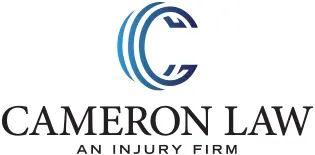Whiplash: It’s Not What You Think it Is

Whiplash. The word has a negative connotation to some in the general public or at least, the suggestion that someone’s injury is minor or not serious. But what we call whiplash is actually a real, physiological injury, to some important parts of our bodies.
Ligaments and Tendons
In our neck just as in other parts of our bodies, there are bones. Specifically, in the neck, there are bones called vertebrae. These bones need to be held in place and together. This is what ligaments do; they hold bones to each other.
You may have heard of athletes who injure their Anterior Cruciate Ligament; those are the ligaments that hold the bones of the leg and knee together.
The same concept applies in the neck-when the ligaments that hold the vertebrae together are injured, it is called a sprain. And yes, it’s the same concept as a sprained ankle, which involves injury to the ligaments in the lower leg, ankle, and foot.
But it’s not just ligaments that can be injured, it’s also tendons, which hold bones to the surrounding musculature. When tendons are injured, it’s called a strain.
Often, when the neck is injured in an accident, the injury will be called a sprain/strain injury, meaning either or both have been injured. But regardless of which it is, it is not “just whiplash,” it is an actual injury to ligaments and tendons.
Lack of ER Diagnosis
Sprain strain injuries may get a “bad reputation” because they don’t show up on hospital emergency room X-Rays (only actual bones show up on X-rays). That may lead someone into thinking—and mislead a jury into believing—that a victim “was fine” after an accident. The jury may wonder how someone was fine in the ER, and then developed an injury later.
But that sprain strain injury always existed; it’s just that the sprain strain doesn’t show up on X-Rays in an ER. Rather, an MRI is needed, which usually isn’t ordered until the victim sees a private doctor.
Sprains and strains also may be looked upon dubiously by juries, because they don’t always immediately hurt the way a broken bone does. In many cases, the real pain from a sprain or strain may not show up until a few hours, or even a day, after a car accident.
Therapy and Healing
Sprains and strains do get better, with therapy and treatment—though how much they get better can vary from victim to victim. Most everyone will realize some improvement.
But in many cases, ligaments or tendons don’t completely heal themselves. While some may have an almost complete recovery, others will continue to have lingering pain and loss of movement, for long after the injury. In some cases, people can feel fine some days and have severe disability and pain on other days.
Have you injured your back or neck after an accident? We understand what you’re going through. Contact the personal injury lawyers at Cameron Law today at 702-745-4545 for a free consultation.
Sources:
mayoclinic.org/diseases-conditions/sprains/symptoms-causes/syc-20377938
healthline.com/health/sprain-vs-strain


